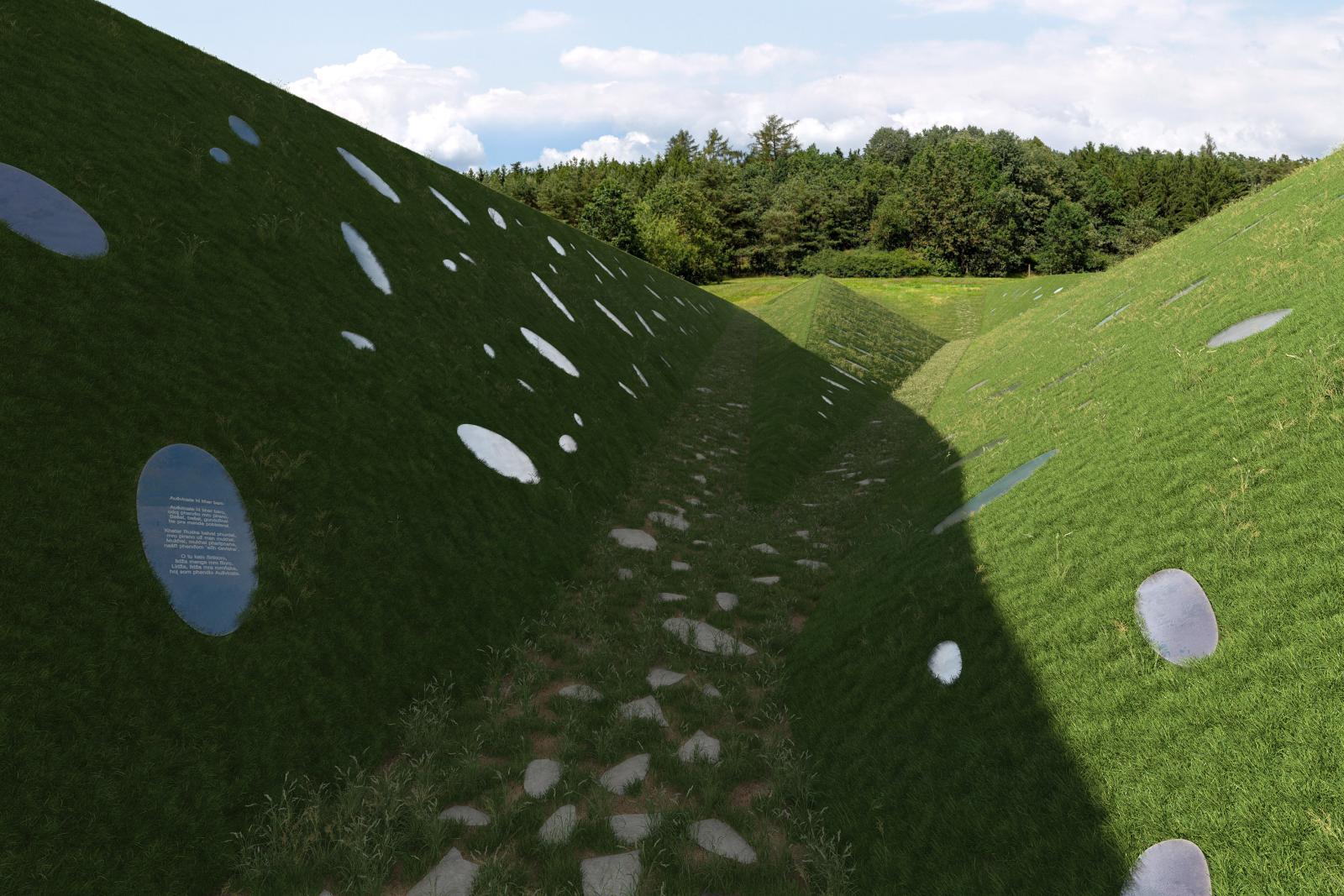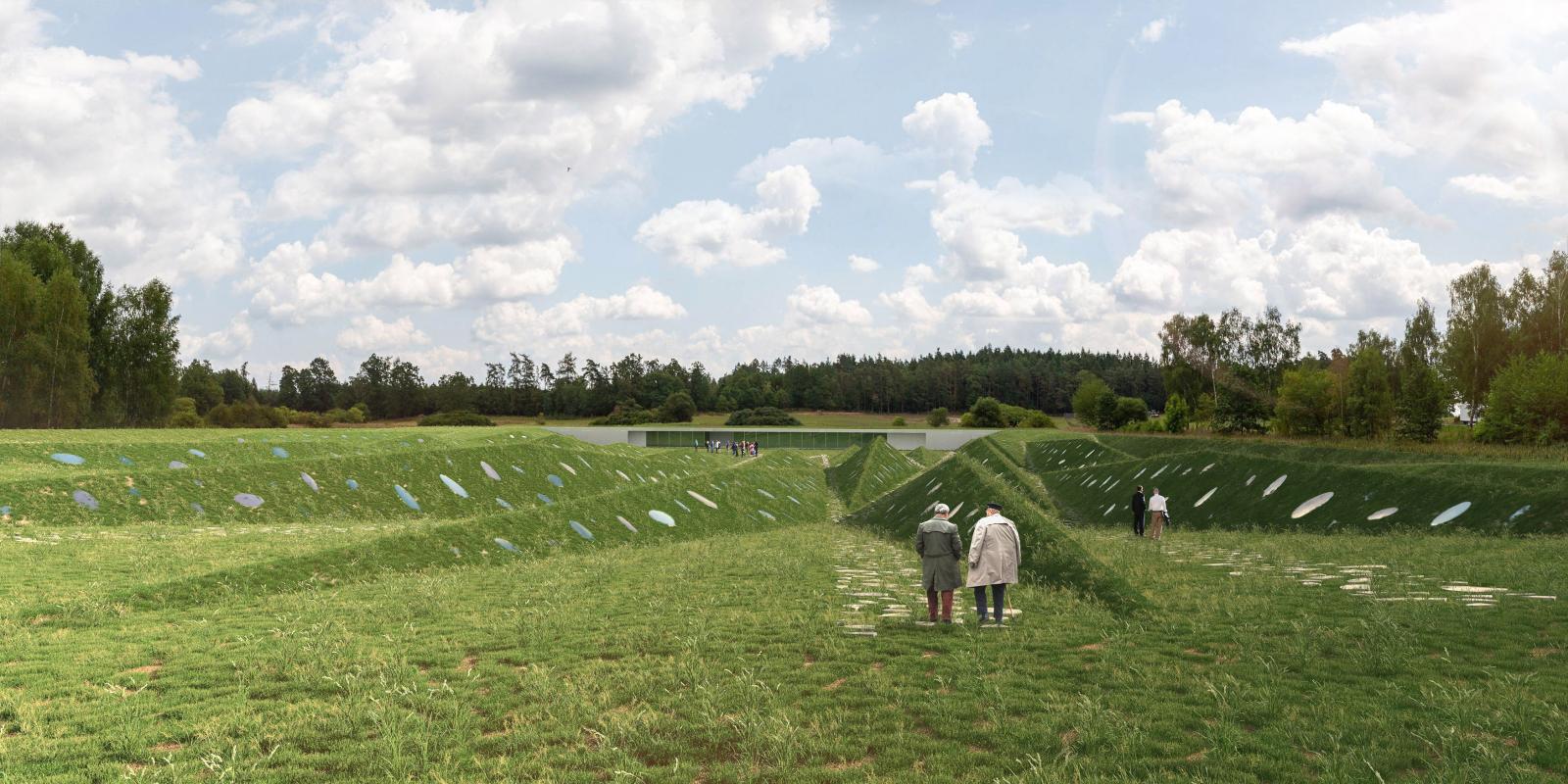“The landscape has its relentlessly long-lasting memory, sometimes hidden deep underground, in the imprints of long-forgotten paths and the foundations of houses in relief, visible, for example, from aerial photographs. People‘s memory is much shorter; it is a negotiated memory, influenced by the hierarchy of power, in which the forces of the „majority“ and „minorities“ are not in balance.” [ competition brief ]
The Memorial to the Holocaust of the Roma and Sinti in Bohemia addresses two distinct and delicate issues - one of the “Forgotten Holocaust” that occurred at this place during WWII, and the other the fact that it has been displaced by the society for such a long time, most literally expressed by the pig farm that operated here for decades after.
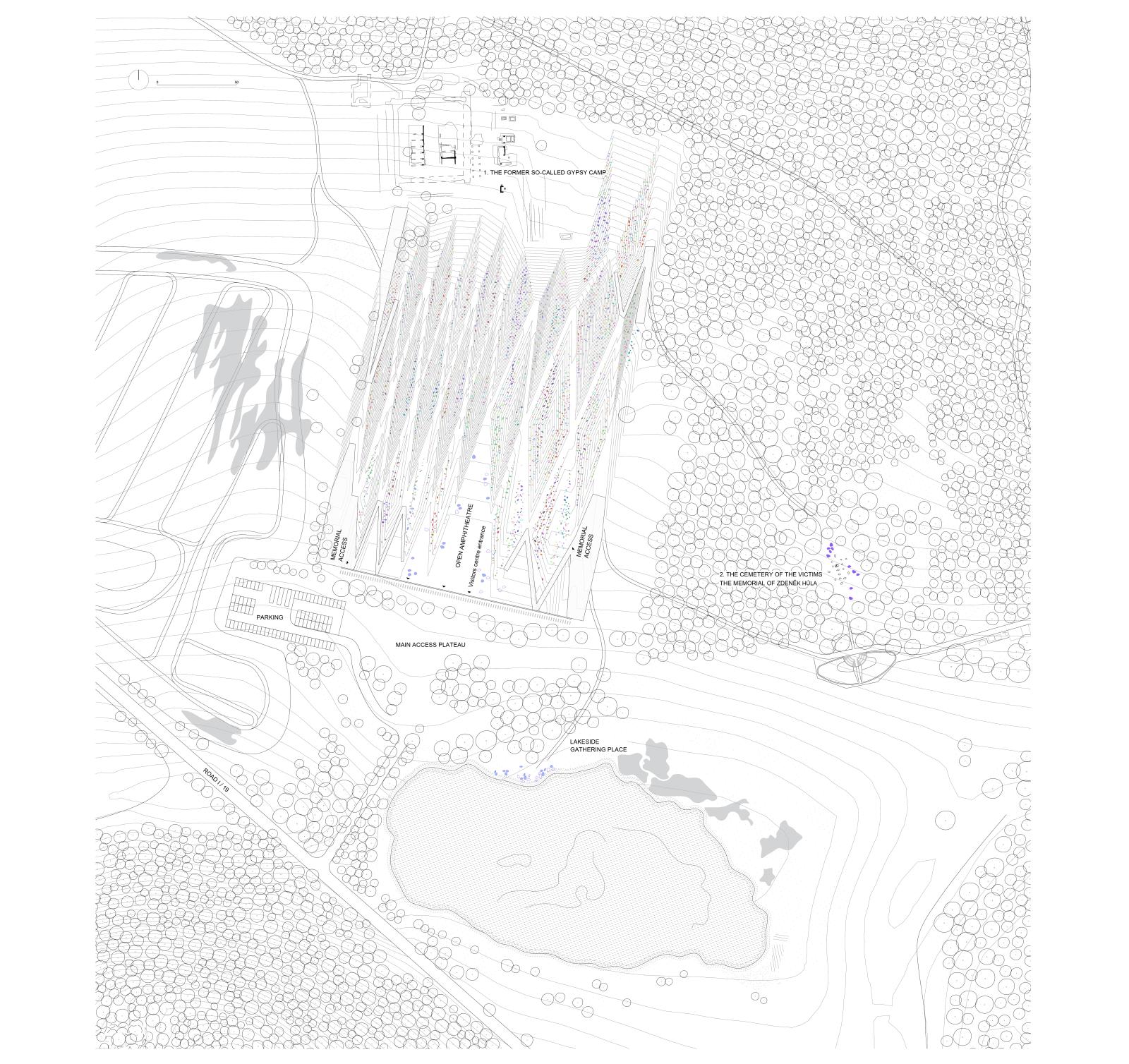
In its key gesture, the Memorial returns the entire site to its original natural state before WWII camp and the pig farm, allowing the surrounding landscape to embrace it in peace and harmony. The Memorial is therefore mainly a landscape formation on the entire site of the demolished pig farm - it is manifested in trenches and hills covered in grass, that connect key points of the site to one another. By clinging to the everlasting power of life in Nature, the Memorial offers, above all, a hopeful look to the future. The only built structure - the Visitors Centre - is hidden from view bellow ground and only perceived from within the landscape.
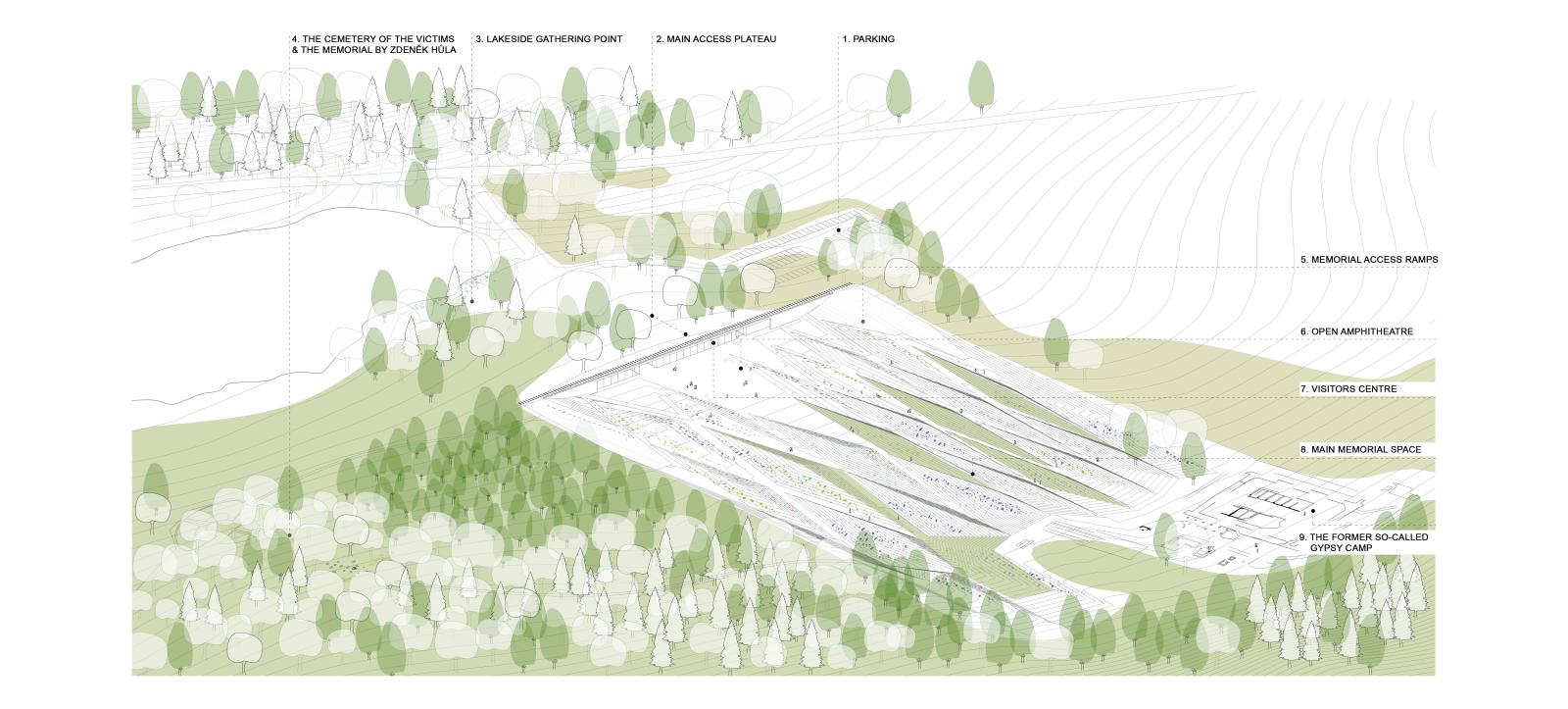
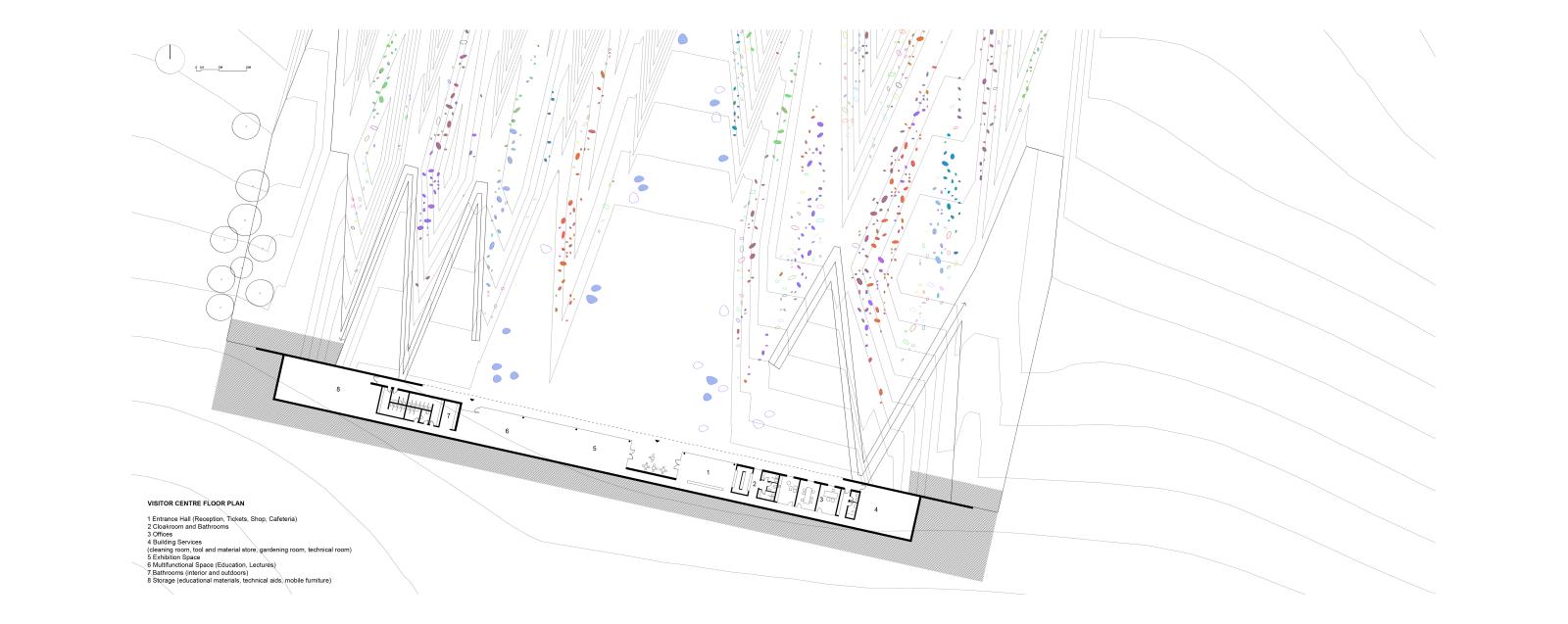
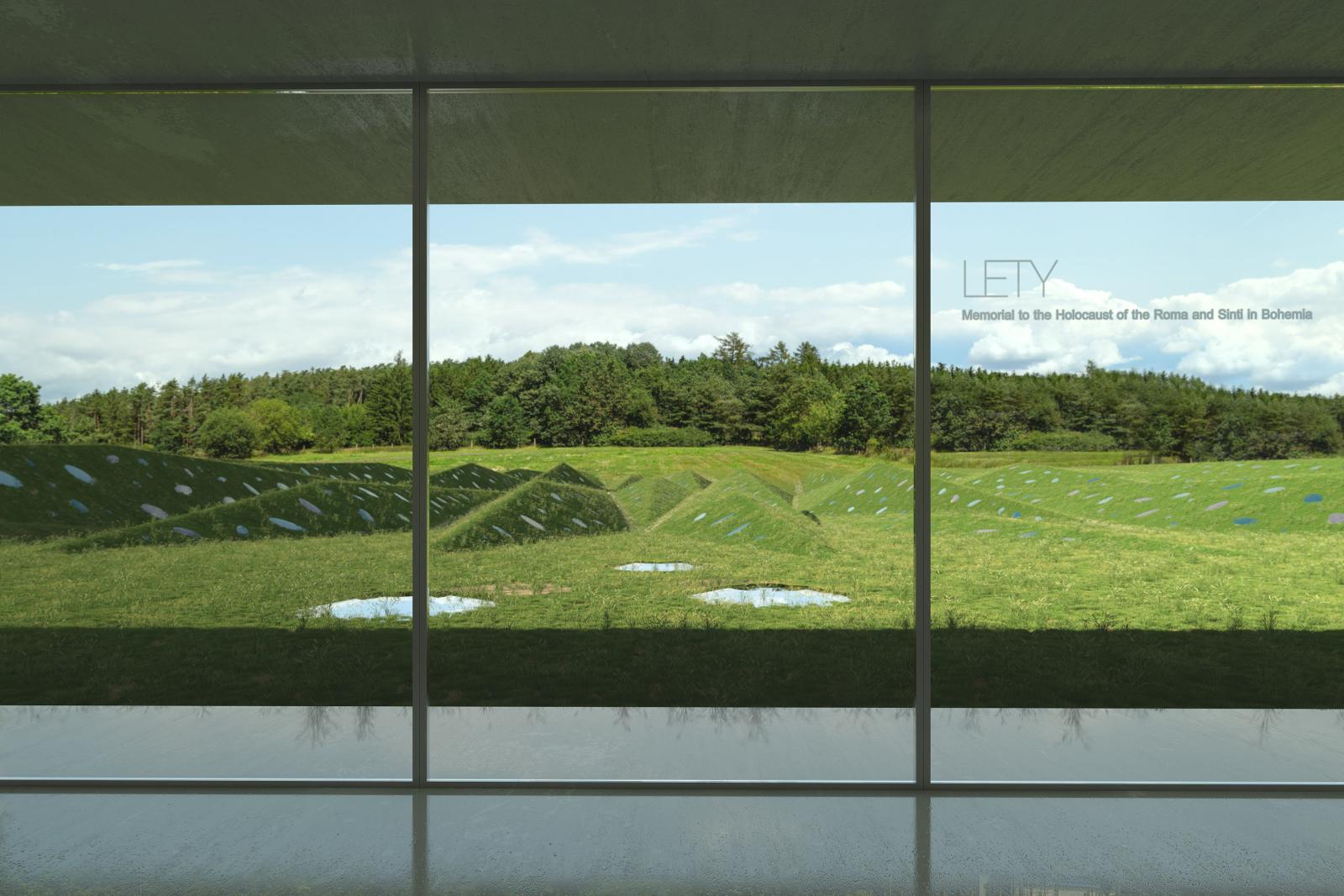
The sloping landscape of the site is reconfigured into longitudinal grass hills and trenches, stretching from the lake where the Roma and Sinti first bathed upon arrival to the so-called “Gypsy camp” at the fringe of the northern forest, where they were held. This act in a way inflicts a trauma to the landscape recalling the terrors that occurred at this place during the war and post-war periods. Moreover, the geometric precision of the trenches indicates a systematic and organized trauma of the WWII genocide. The trauma to the landscape is deep and strong, it remains part of the surrounding nature and of the history of this place, just like the Holocaust became irreversibly part of the lives of the survivors and their families.
Meandering and interconnecting pathways within the trenches and between hills initiate constant movement of visitors, as if searching for a place to settle within the landscape, and reminiscing the Roma and Sinti nomadic way of life, both as a personal choice as well as a necessity due to hostile communities they encountered.

The visitors’ experiences vary from the point of being completely immersed into the large grass trench, not aware of the immediate surroundings, at the same time both protected and oblivious, to the viewpoints on higher grounds overlooking the entire landscape formations, of which one trench is only a constituent element. In this way, one constantly shifts positions from being an individual to being part of the entire society, which has a potential to spark discussions about the position of the Roma and Sinti in the society, both before and after the war, about human rights in general, about freedom and coexistence.
The grass surfaces of trenches are covered in an abundance of reflective metal plates, which compose a large exposition in the open, some of them bearing engraved names of the victims, some short testimonials of the survivors, but all reflecting the colors of the natural surroundings and life itself, sky, greenery and the visitors’ faces and silhouettes.
